Perspective: Waters, Wars, Wheat, Watts, Waste and Wasta Add Up to Syria’s Liquid Worries
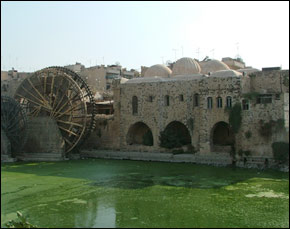
By Dr. Paul J. Sullivan
Special to Circle of Blue
Syria’s economics, history, politics, diplomacy, and culture have often been defined in a large part by water. This has been the case since this area was part of the Eblan civilization, or about 2500 BC, onward. But let’s look at some more recent facts and events.
About 30 percent of Syria’s labor force works in agriculture. About one-third of its land is cultivatable. Only one-fourth of that land is irrigated. Much of the irrigation is done in somewhat wasteful ways that has much of the precious water pouring past the crops. Farmers have subsidized energy and also have a yearly flat rate payment for irrigation water. This rate does not even get near to true costs of the water they use. Hence, water is overused, much more land is becoming saline, and water tables are being drawn down in some places at a fast rate. Wells by law need to be licensed, but the rule of law in Syria is sometimes not the letter of the law.
Some of the fields are irrigated with wastewater, but not in a way one would hope. Some of this wastewater is untreated. Some of the farmers and others say this reduces the need for fertilizers. By law this wastewater cannot be used for irrigating vegetables that will not be cooked, but it surely must be adding to the health problems in the country in some way. The government has been putting a lot of effort and money into improving wastewater treatment in general, but it does not seem to be keeping up with the growing problems.
Wastewater infrastructure development seems lacking. Even so, Syrian cities reuse a lot of the treated wastewater. Syria seems to understand the water problems it faces, but it also seems to be slowly getting up to speed to solve them.
The government has been putting some efforts into diffusing new irrigation technologies and starting a group of water management departments and organizations. It is also putting pressure on the farmer’s unions, which in Syria are government organizations to get people to handle the water better. However, very little progress is really being made compared to the problems the country faces.
Syria’s agricultural policy aims to achieve self-sufficiency in food and agricultural inputs to industry, such as textiles and food processing. The government often buys agricultural products from the farmers at higher than international prices and it subsidizes many inputs for farmers, including water. This prompts many farmers to grow even more, stressing out land and water systems even more so.
Syria’s main export crop is cotton, which is a water-intensive crop. Others of its main crops include wheat and barley, also water intensive crops. Syria has a significant trade in fruits and vegetables. This may help the bottom line for Syrian food “self-sufficiency”, but these are far from long term rational decisions.
It might make a lot more sense to focus on virtual water imports for the water-intensive crops and for the farmers and others to switch their economic decisions toward less water-using crops. But this will not happen until the mostly still socialist, centrally-planned economic and political system of Syria either changes its incentives or starts to open up to the actual resource costs of water.
Syria’s population growth rate is close to 3 percent. Its population has doubled since the mid-1980s. Its agricultural needs for water have greatly increased, which has been exacerbated by the import-substitution polices of the country. Water needs for industry, commerce and households have also increased, but close to 85 percent of Syria’s water use is for agriculture.
Syria’s rapid population growth rate also generates greater electrical needs. Hydropower used to be the dominant source of electricity in the country in the early 1980s. Given the limitations of water resources for energy in the country, mostly from the Euphrates, more thermal power stations, also heavy water “drinkers”, have been and are being built. Many stations have been and are being converted toward using natural gas more than oil, given the declining oil fortunes of the country. However, the thermal power station building has not been keeping up with the declining fortunes of hydropower in the country.
One of the more delicate reasons for this decline in hydropower has been the change in the flows of the most important external water source for Syria: the great Euphrates River. The Euphrates gets its water initially in the Taurus Mountain in Turkey, and then flows through the massive GAP project in Turkey. The GAP project has been using more and more of the water of the Euphrates to irrigate crops and for the production of electricity to produce jobs and prosperity in the southeastern part of Turkey.
This part of Turkey, which has mostly Kurdish population, has been one of the poorest and most restive parts of the country. The Kurdish populations of Turkey, Iraq and Syria live within a certain proximity to each other. There may be issues here in the future, particularly when one considers the Iraqi Kurds’ desires to have even greater autonomy. Another difficulty are the lives of the Syrian Kurds, who reside in a state that some in their community say does not given them their due nationality, economic or cultural rights. The Kurds of northeastern Syria could be an increasing source of instability if certain changes are not made to their economy and more.
The Turks see part of the solution to their Kurdish problem to involve developing a mostly Kurdish region in the southeastern part of the country. The Turks are also the largest investors in the Kurdish regions of Iraq for similar reasons. They want a more prosperous Kurdish part of Iraq, given that prosperity might reduce the chances of these Kurds pushing separatism more and also dragging the Turkish Kurds into their separatist efforts.
All three of these Kurdish areas will need more water to produce this increased prosperity and peace. But the Euphrates only has so much water and Turkey seems to be holding all of the most important cards on the table at the moment. Turkey also has very different definitions and claims to the water of the Euphrates than the Iraqis and the Syrians are willing to fully accept.
The water flows from Turkey through Syria and then on to Iraq. Some long term wise agreements on economic, energy and irrigation development and on water sharing and water trade will be needed, but these may not happen any time soon. These are very sensitive issues across these countries and have been for decades. As things stand now, it is not possible, given the water flows of the river, to have all parties satisfied and tensions are building. The improving relations between Syria and Turkey may alleviate these tensions at the national and higher levels, but at the farmer and village levels they are growing in Syria and in Iraq.
The Tigris River also defines the northeastern tip of the border between Syria and Turkey. The Tigris runs along this border and then flows immediately into Iraq. The Tigris River Basin waters in these border areas are used by Syria, Turkey and Iraq. Underground aquifers are “shared” by these three important countries. No real agreements have been signed regarding these underground waters. There is a Joint Trilateral Committee that is supposed to be looking into better ways of sharing the water.
The vicious droughts that have ravaged Iraq and Syria in recent years, especially the ones in 2008 and 2009, have further brought to light the importance of water for this region. Hundreds of thousands of people in Syria and Iraq had to leave their lands because there was not enough rain and other sources of water to make living on them even subsistence any more.
Indeed, Syria has been hit very hard by droughts. These droughts are a devastating issue for many of the farmers and other rural people in the country. The drought and the decreased flows of the Euphrates and other rivers in Syria have also led to severe water shortages in some urban and semi-urban areas. Aleppo, a city in northern Syria, has been facing severe water shortages, for example. There is a project to send the waters from the Euphrates to Aleppo, but, again, there is only so much water in the Euphrates to use and share.
About 75 percent of the people in Syria are urban or semi-urban dwellers. Out of the 20 million who live in this drying country, eight million can be found in Damascus and Aleppo. These cities may be facing some very serious sustainability issues due to water in the not too distant futures. The Barada River, the main river of Damascus, is hardly what it used to be due to droughts, pollution, and overuse.
When the Israelis captured the Golan Heights and the Mount Hermon area, they also gained control over the banks and access to the Sea of Galilee as well as much of the headwaters of the Jordan River. The Yarmouk River, which acts as a border with Syria and Jordan in places is also a border of the Golan, hence making this important tributary to the Jordan River a vital source of dispute for Syria and Israel. The Hasbani River flows in from Lebanon to Israel, but also along the edges of the Golan. The Banias River originates at Mount Hermon. The Dan River originates at Mount Hermon. By controlling the Golan Israel controls the tributaries and sources of water for the Jordan River and the Jordan River Basin watershed. Water issues also involve the ownership and resolution of the dispute over Shebaa Farms, which is just opposite to the Golan, and has water underground and flowing over it.
Negotiations and disputes between Syria and Israel have often been about water. The wars and other conflicts between these two nations has often revolved around water, both above and below ground. Syria’s and Israel’s interests in Lebanon also include interests in Lebanese water and this is much more than just the Shebaa Farms.
Some of the water in Lebanon that flows from the Orontes River travels through Syria to Turkey. The place where it flows out into the Mediterranean is called Samandag, which is in the Hatay Province of Turkey. This province has been a source of dispute between Turkey and Syria. Part of the dispute has been over water, not just land. This dispute seems to have taken a back seat to the gradually improving relations between the two countries and the greater source of water-induced political stress, the Euphrates. However, as water tensions mount, especially in the northwestern part of Syria, where this river is important, then these international tensions might come back.
One of Israel’s main goals is to have hydrological security. The same could be said of Syria as well as Jordan, Lebanon, and Iraq, which also share some of their water sources with Syria. And, of course, we cannot forget the Israeli-Palestinian issues that revolve around water. Much of that water also comes originally from the Golan and from the tributaries and other sources of water for the Jordan River Basin.
The water flows from Syria and Lebanon south to Israel and the Occupied Territories. However, as is well known, much of that water flow is diverted for Israeli use. This is a huge source of tension in a water-stressed area. The Israeli-Palestinian water disputes are for a later article, but it is important to note here that they are intimately connected to the Syrian-Israeli, Lebanese-Israeli and Jordanian-Israeli water disputes. So, as usual in this critical, but brittle region, many issues are interconnected in many complex and sometimes unpredictable ways.
As the populations and water needs of these countries grow, tensions will likely rise. Some of the fault lines, which also often can be seen as rivers and aquifers, will become either more of a battle zone of more of negotiation space. Which way these go will determine war and peace, prosperity and poverty, and life and death for many.
So we have seen waters, wars, wheat, watts, waste part of this story. What about the wasta? Wasta is the Arabic term for connections and clout. The story of water within Syria and between Syria and its neighbors has been about clout. Israel has the clout with its powerful military and intelligence services, and, of course, the support of the U.S. Turkey has the clout with its economic, military and other power. Syria, however, has much less clout than the Israelis and the Turks on water issues. It has more wasta than the Lebanese, but even this seems to be changing. The Palestinians are left in the dry not only because they lack relative wasta, but also because of the upstream disputes, which are also about relative wasta.
Where will this all lead us? Without more efficient use of water, increased desalinization, better cropping patterns, and better incentives for water use within Syria and within the entire region, we are going to face more wars, more destruction, and more deaths. We could also face more insurgencies and asymmetric violence in Syria and across the Eastern Mediterranean. Water is a key to peace. It is also a weapon and purpose of war. These issues, most particularly those between the Syrians and the Israelis, need to be resolved in a much wiser and quicker way than they have been so far. Otherwise, the region might be boiling once again. This time around the region is much more brittle and this time non-state actors could be a much bigger part of things and things really could spin out of control in many ways.
Water is a key to peace and prosperity. It is also a key to war and conflict. The Syrians and their neighbors surely understand this better than most.
Dr. Paul J. Sullivan is a professor of economics at the National Defense University, Adjunct Professor of Security Studies and STIA at Georgetown University, and an adviser to Sudan projects at the United States Institute of Peace. He is an internationally recognized expert on the Middle East, parts of Africa, and international energy, water and other resource security and conflict issues.
Circle of Blue provides relevant, reliable, and actionable on-the-ground information about the world’s resource crises.


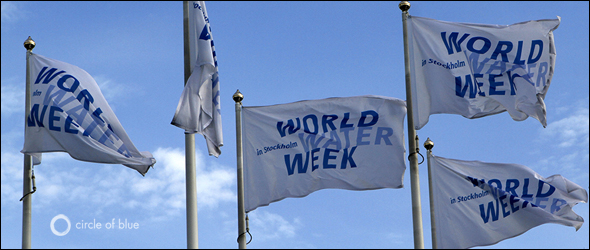
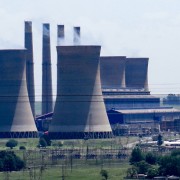
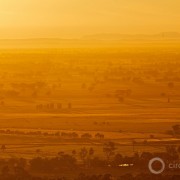
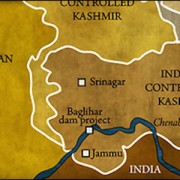


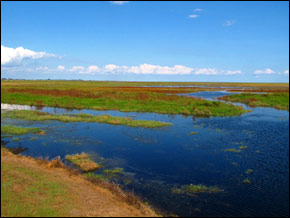

Leave a Reply
Want to join the discussion?Feel free to contribute!